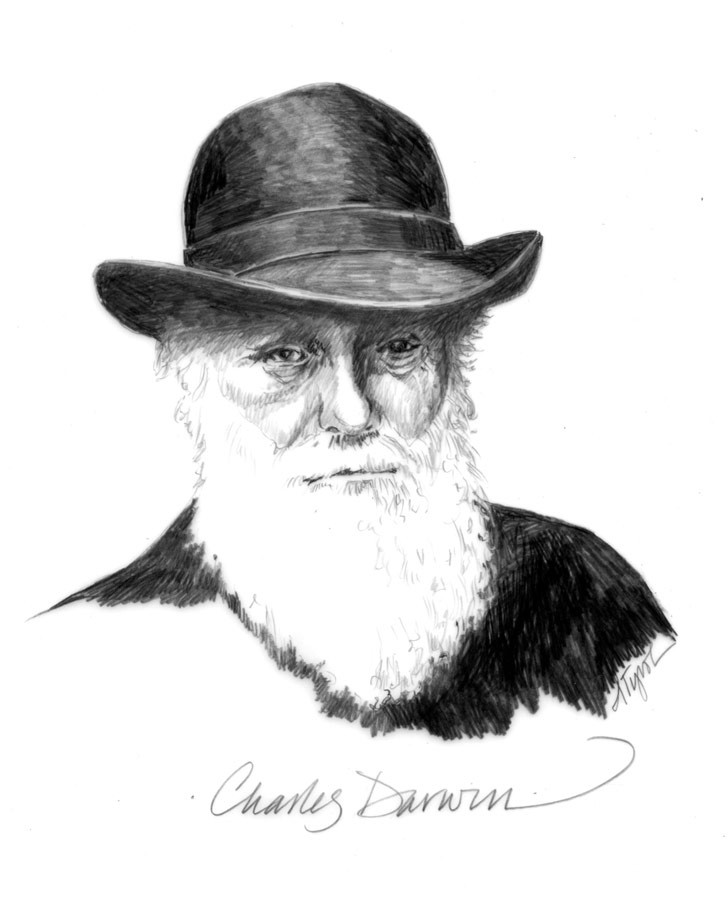
Back in January, taking advantage of the lack of snow, I was out hiking with a friend along a steep hillside not far from my house. Usually this hillside is too slippery for wintertime travel, but on this day, conditions were optimal. A few inches of crunchy, Styrofoam-like snow provided excellent traction.
Not long into the hike, we came across the carcass of a deer, wedged up against the uphill side of a red oak trunk. What had killed the deer was impossible to say. Coyotes, judging by the canine tracks that converged on the scene from several directions, were in the final stages of dismembering the limbs and tearing up the hide. Whether the deer had initially succumbed to a coyote’s teeth or rather to malnutrition or bad luck was beside the point.
As we nudged around the bones with the toes of our boots, my friend said, “looks like ‘survival of the fittest.’” And indeed, at first glance, that’s what we were seeing. The deer, clearly unfit for the environment in some important way, was dead and in the process of being dismantled. The coyotes, gnawing on the bones and having performed some sort of end-zone victory dance around the carcass the night before, were the victors.
But there’s another interpretation of the dismembered deer carcass we found that day, one that casts “survival of the fittest” in a very different light. While Charles Darwin is often attributed with coining the phrase, it was actually the English philosopher Herbert Spencer, a contemporary of Darwin, who came up with “survival of the fittest” in an effort to frame Darwin’s observations within the religious and economic culture of the day. What Darwin actually wrote in The Origin of Species was the far less quotable observation that species are adapting over time to changes in their environment. “There is a struggle for existence leading to the preservation of each profitable deviation of structure or instinct,” he wrote.
While my friend and I were focused on the deer carcass and the coyote tracks in front of us, Darwin was writing about deer and coyotes in general. Where we had the individual animals in mind, Darwin was concerned about the group. This puts the deer carcass we found in a somewhat different light.
Far from having a winner (coyote) and a loser (deer), we have two winners. The coyote, in the face of only a few short generations, has left its desert habitat in the American West, crossed the continent, doubled in size, and has become a top predator in the New England woods, replacing the Eastern timber wolf, whose ability to hunt deer in packs across many square miles was no longer suited to a landscape of patchwork farms, subdivisions, and small lots. The wolves hadn’t been able to adapt and have, for the moment at least, gone extinct in New Hampshire and Vermont.
But the deer also come out on top in this story. Not the particular deer lying in the snow up against the red oak, but white-tailed deer in general, one of the most widely adapted species on the continent and among the world’s fastest, an animal so finely tuned that it can seemingly appear and disappear in the woods without a sound, and a species whose numbers today in Vermont and New Hampshire are far greater than they were back in the days of the unbroken forest and wolves hunting in packs.
“As natural selection acts by competition, it adapts the inhabitants of each country only in relation to the degree of perfection of their associates,” Darwin wrote. The coyote and the deer are both succeeding, in other words, through their mutual association. By preying upon deer, coyotes are constantly improving the deer herd overall. By becoming ever-more elusive, the deer are constantly forcing coyotes to improve their game and causing the least adapted coyotes to go hungry and starve. Coyotes kill deer, and deer (indirectly) kill coyotes. Both species are thriving not in spite of, but because of, one another.
In the world of ideas, as opposed to the world of carcasses and coyotes, “survival of the fittest” has triumphed while the more nuanced “natural selection” occupies a minor niche. Clearly, “survival of the fittest” is better adapted to the human culture in which it was coined. When we hear Darwin’s name mentioned, most of us picture the lion at the throat of the zebra and not lions and zebras flourishing over time to mutual advantage. Why that is the case would make a fascinating study of natural selection all by itself.


Discussion *